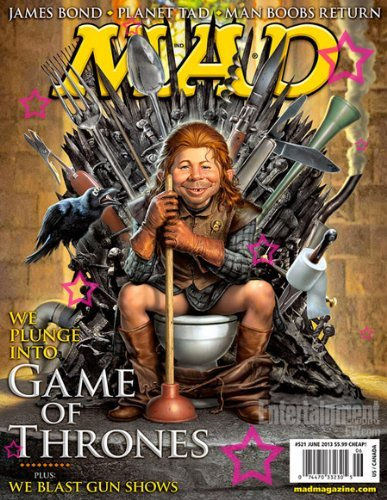The successes and failures of MAD
- Morgan Eun
- Sep 29, 2021
- 3 min read

You’ve probably at least heard of the magazine and Warner Bros. TV series “MAD”; especially if you were born in the 2000s. Considering the unique animation style, allusions to modern pop culture, and the fever-dream essence of the show, it was definitely hard to miss. But if you’ve somehow forgotten about it, here’s a quick rundown.

Before the TV show's debut in 2010, MAD was originally a magazine founded in 1952 by editor Harvey Kurtzman. The magazine consisted of satirical content about politics, pop culture, popular advertisements, and TV shows. It started with remaking advertisements in regular magazines. Eventually, these lampooned remakes would grab so much attention that companies would pay for their creation. Through parodical art and funding, MAD magazine was eventually born.
The MAD magazine continued to thrive due to its algorithm. It was recognizable, with almost every feature of the magazine consisting of Alfred E. Neuman fused into a face or poster of the cover art. More than that, the art itself was extremely histrionic and oftentimes depicted celebrities or cultural icons doing bizarre things. Botched and disproportionate facial features also gave the magazine a signature look.

The success of MAD the TV show is not to be confused with that of the magazine. The flourishing of this original aspect of the brand was unlike the show, as the two are not even comparable. Production for MAD Magazine lasted from 1952 to 2018 (67 years) compared to the show which came to an unwanted end after 3 years. Costs were high to produce the TV series MAD, but the biggest contributor to the cancellation was the poor ratings.
Despite the low ratings at the time, there were also those who absolutely loved the show. In fact, there’s such controversy in the ratings on IMDb that the two leading figures are 16.8% of users rated the show a ten, and 20.3% of users rated the show a one (on a ten-point scale).
What made the TV show spin-off of MAD magazine possess such controversial popularity compared to the magazine which was loved by many?
Well, there are a couple of things that were weaknesses in the TV spinoff; those being poor humor and artistic consistency.
There were definitely memorable jokes from the show, but much of them were extremely pop-culture oriented. If one wasn’t in the loop about this genre of entertainment, none of the references would make sense. On top of that, the show would allude to outdated material compared to the age of their audience. An Al Pacino parody would not be amusing to an average 6-12 year old.
The jokes themselves were shallow, such as “The Bieber bowl” advertisement, which marketed a tool designed to achieve Justin Bieber’s bowl cut, or a Dragon Ball GT pun-esque humor were common in the show.

Much of MAD was heavily based on parodying pre-existing TV shows, advertisements, and video games. On top of that, much of the art and humor were inconsistent. Due to the 6-8 week turnaround production time, the animation was created through a variety of mediums and was often choppy. Every episode was composed with a different animation style and lacked an algorithm unlike its similar competitor “Robot Chicken”, which also did parodies, but with a consistent claymation medium. In terms of art, not many things made MAD identifiable compared to an average cartoon series.

Although there seem to be many mistakes with the major aspects of the show, to some, these were successes. The other 16.8% of users must’ve enjoyed the cheesy humor and rough animation.
Regardless, MAD continues to live on. Alfred E. Neuman is still a prevalent icon in pop culture and early 2000s nostalgia. We mustn’t let the flaws of MAD overwhelm the brilliance of its concept.

Being a huge fan of the magazine and TV show this is an awesome article great job!